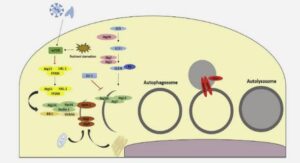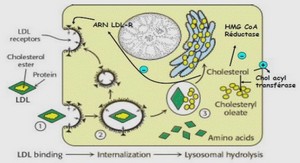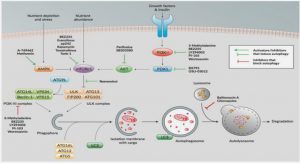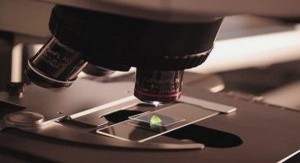Antiproliferative and Antiplasmodial Dimeric Phloroglucinols from
Mallotus oppositifolius
General Experimental Procedures
Optical rotations were recorded on a JASCO P-2000 polarimeter. IR and UV spectra were measured on MIDAC M-series FTIR and Shimadzu UV-1201 spectrophotometers, respectively. 1 H and 13C NMR spectra were recorded on a JEOL Eclipse 500 spectrometer in CDCl3 with TMS as internal standard. Mass spectra were obtained on a JEOL JMS-HX-110 and an Agilent 6220 LC-TOF-MS. Preparative HPLC was performed using Shimadzu LC-10AT pumps coupled with a semipreparative Varian Dynamax C18 column (5 μm, 250 × 10 mm), a Shimadzu SPD M10A diode array detector, and a SCL-10A system controller. Plant Material. Leaves and inflorescences of Mallotus oppositifolius (Geiseler) Müll. Arg. (collection: Richard Randrianaivo et al. 1425) were collected at an elevation of 137 m in December 2006 near the village of Befarafara in the dry forest of Solanampilana, 35 km north of Daraina, Antsiranana, Sava region, 13°05′42″ S 049°34′57″ E, northern Madagascar. The sample collected was from a shrub 3 m tall, with white flowers. The plant was determined by Dr. Gordon McPherson (Missouri Botanical Garden). Duplicate voucher specimens were deposited at the Centre National d’Application des Recherches Pharmaceutiques, the Herbarium of the Parc Botanique et Zoologique de Tsimbazaza, Antananarivo, Madagascar, the Missouri Botanical Garden, St. Louis, Missouri, and the Museum National d′Histoire Naturelle in Paris, France. Antiproliferative Bioassay. The A2780 ovarian cancer cell line assay was performed at Virginia Tech as previously reported.29 The A2780 cell line is a drug-sensitive ovarian cancer cell line.
Intraerythrocytic Stage Antimalarial Bioassay
The effect of each fraction and pure compound on parasite growth of the Dd2 strain was measured in a 72 h growth assay in the presence of drug as described previously with minor modifications.31,32 Briefly, ring stage parasite cultures (200 μL per well, with 1% hematocrit and 1% parasitemia) were then grown for 72 h in the presence of increasing concentrations of the drug in a 5.05% CO2, 4.93% O2, and 90.2% N2 gas mixture at 37 °C. After 72 h in culture, parasite viability was determined by DNA quantitation using SYBR Green I (50 μL of SYBR Green I in lysis buffer at 0.4 μL of SYBR Green I/mL of lysis buffer).32 The half-maximum inhibitory concentration (IC50) calculation was performed with GraFit software using a nonlinear regression curve fitting. IC50 values are the average of three independent determinations with each determination in duplicate and are expressed ± SEM. Intraerythrocytic Stage Cytocidal Antimalarial Bioassay. The effectiveness of compounds 1 and 2 at killing intraerythrocytic stages of the chloroquine-sensitive HB3 and chloroquine-resistant Dd2 strains of P. falciparum was assessed as previously reported.15 LD50 values are the average of three replicate determinations and are expressed ± SEM. Figure 4. P. falciparum blood stage distribution after 13 days of treatment at the indicated concentrations to assess antimalarial activity against early-stage gametocytes. The control is untreated parasites. DMSO (drug vehicle at 0.5%) was included as a second control since it affects the blood-stage distribution but does not affect the total parasitemia. No parasite growth was observed at doses of 2 of 0.14 and 39 μM and of 1 of 44 μM. Results are presented as means of two independent experiments ± SEM, (*) p ≤ 0.02 and (⊥) p ≤ 0.005 compared with the control group. Journal of Natural Products Article 391 dx.doi.org/10.1021/np300750q | J. Nat. Prod. 2013, 76, 388−393 Late Gametocyte Stage Antimalarial Bioassay. To test compounds for their effectiveness in killing late-stage (stage V) gametocytes, late-stage gametocytes were generated using a combination of established methods.16,33 Initial gametocyte cultures were developed from the P. falciparum NF54 strain (chloroquine-sensitive strain). All cultures were maintained in 75 cm2 culture flasks in a reduced oxygen environment (5% O2, 5% CO2, 95% N2) at 37 °C. Parasitaemia was calculated by counting the percentage of infected RBCs by Giemsa staining of thin smears and light microscopy. Asexual stages were synchronized by sorbitol treatment at least two days before setting gametocyte cultures.34 Thin blood smears were made and stained with Giemsa to check parasite development on days 4, 8, 12, and 13 after the initial subculture. On day nine of the gametocyte cultures, parasites were treated with 5% sorbitol for 10 min at 37 °C to start removing asexual stages. Sorbitol treatment was performed for four consecutive days, which effectively removes >99% of asexual parasites. Gametocyte recovery and concentration was achieved on day 13 using a NycoPrep 1.077 cushion,16 and the number of gametocytes was calculated using a Neubauer chamber. About 30 000 to 50 000 gametocytes per well were added to the black flat-bottom half-area 96- well plates containing drug candidates in a 100 μL final volume. The plate was incubated in a humidified chamber at 37 °C and low oxygen conditions (5% O2, 5% CO2, 95% N2) for 72 h. Alamar Blue was added on day 16 postinduction at 10% of the well volume.33 The plate was returned to the chamber for an additional 24 h and then was read in a microplate reader at 585 nm after excitation at 540 nm. IC50 values were calculated using a dose−response curve fitting with GraFit. IC50 values are the average of two independent determinations, each determination in duplicate and are expressed ± SEM.
Early Gametocyte Stage Antimalarial Bioassay
To test efficacy in preventing gametocytogenesis, 24-well plates were set at 0.75% parasitemia (NF54 strain) and 1% hematocrit and cultured for 13 days with or without the presence of compounds 1 and 2. The plate was incubated in a humidified chamber at 37 °C and low oxygen conditions for the duration of the experiment. Medium or medium supplemented with drug was replaced on days 4, 6, 8, and 9−12. On day 13, each well was recovered and the parasitaemia (both asexual and sexual) was calculated from Giemsa-stained smears. Extraction and Isolation. A ground sample of M. oppositifolius leaves and inflorescences (137 g) was extracted with ethanol at room temperature to yield 6.0 g of crude ethanol extract, designated MG 4129. A total of 1.8 g of this extract was made available to Virginia Polytechnic Institute and State University. In order to locate the biological activity and to have an idea about the types of metabolites responsible for the activity of the active fraction, 100 mg of the crude ethanol extract of M. oppositifolius was subjected to a liquid−liquid partition using hexanes, EtOAc, and H2O to afford 42.5 mg of an active hexanes fraction (IC50 6.7 μg/mL). Size-exclusion chromatography on Sephadex LH-20 of the hexanes fraction eluted with MeOH−CH2Cl2 gave mallotophenone (3, IC50 6.3 ± 0.4 μM) and two active fractions (Fr. 3, 13 mg, IC50 2.3 μg/mL, and Fr. 4, 8.4 mg, IC50 1.6 μg/mL). High-performance liquid chromatography (HPLC) on a C18 column with a solvent gradient from water−MeOH (system I) 40:60 to 30:70 for 10 min, to 20:80 from 10 to 15 min, to 15:85 from 15 to 20 min, maintained at 15:85 for 5 min, to 10:90 from 25 to 30 min, and to 0:100 from 30 to 35 min, ending with 100% MeOH for 50 min of fractions 3 and 4 showed the presence of two major and active phloroglucinols (tR 39.79 min; IC50 0.5 μg/mL and tR 44.15 min; IC50 0.61 μg/mL). To isolate more material for structure elucidation and for bioctivity evaluations, the isolation was scaled up by starting with 1 g of ethanol extract. Liquid−liquid partion (hexanes, 3 × 200 mL) followed by Sephadex LH-20 of the hexanes fraction (407 mg) afforded two active fractions (Fr. 3, 125.2 mg, IC50 2.4 μg/ mL and Fr. 4, 137.1 mg, IC50 2.2 μg/mL). Mallotophenone (3) was obtained from fractions 3 and 4 by precipitation. The mother liquid of Fr. 3 was subjected to silica gel column chromatography to give compounds 1 (8.3 mg) and 2 (6 mg). Also, HPLC of the mother liquid of Fr. 4 on a C18 column using isocratic 100% MeOH gave two active peaks (tR 39.79 and 44.15 min), which were purified by silica gel CC to yield compounds 1 (3.1 mg) and 2 (5 mg).





